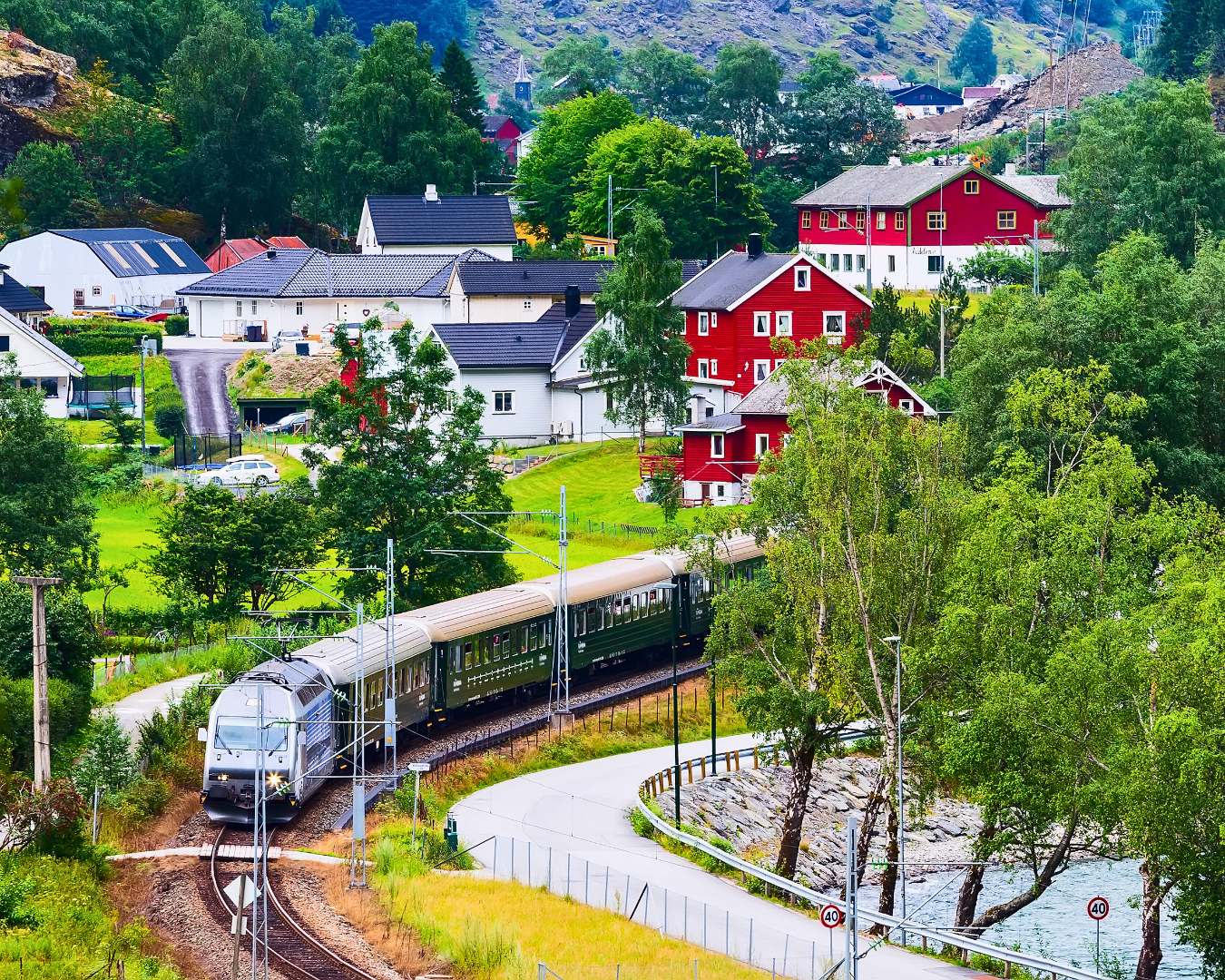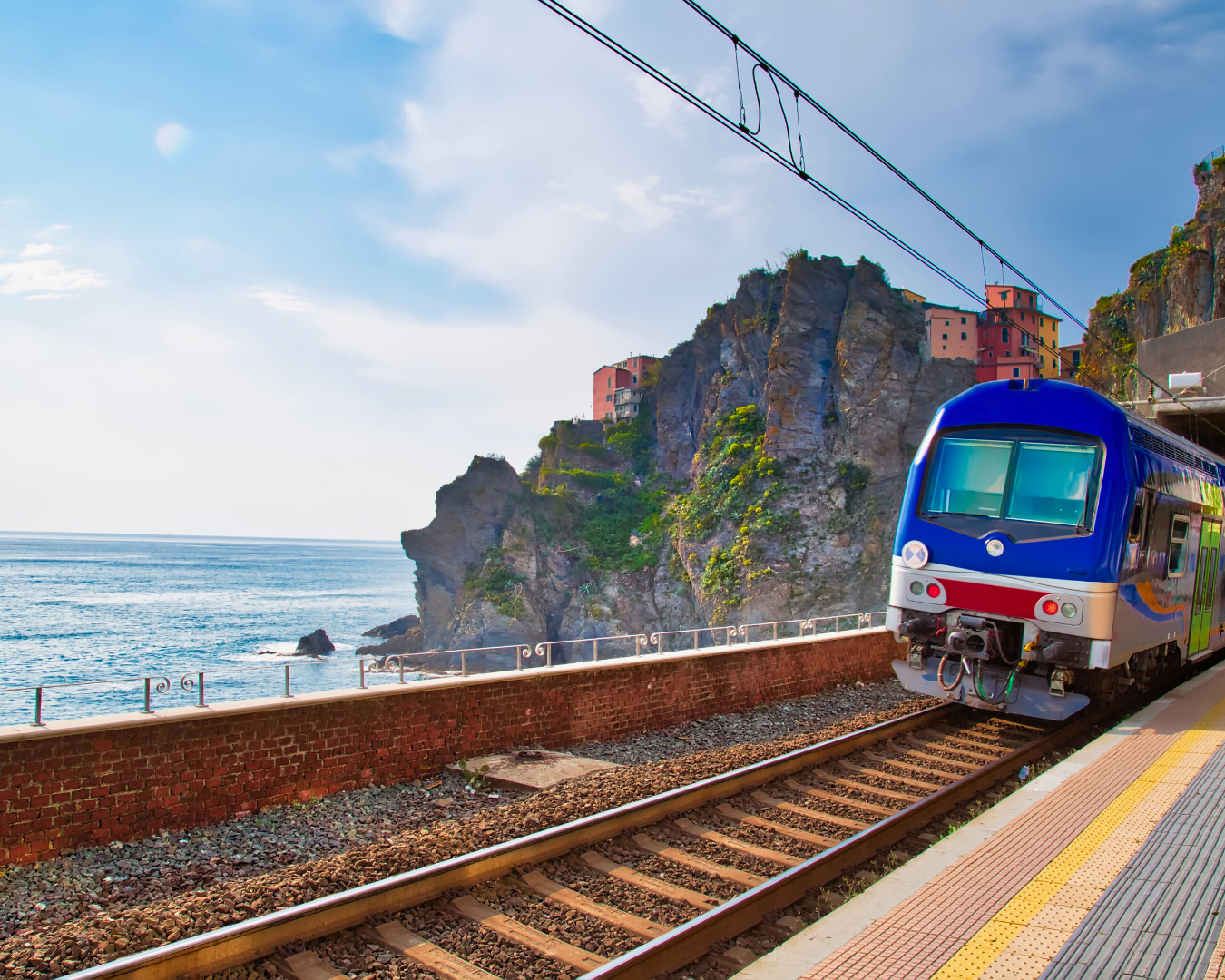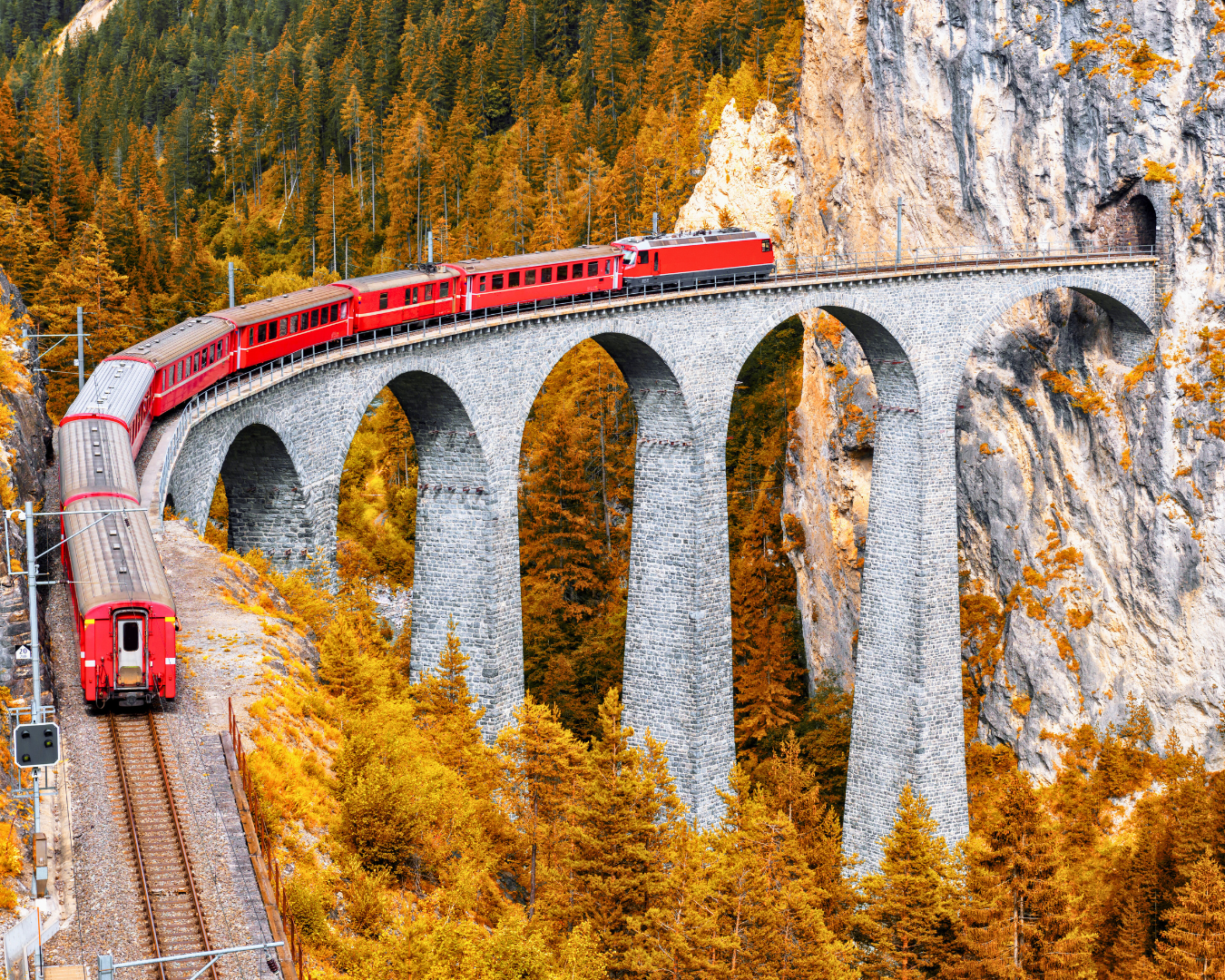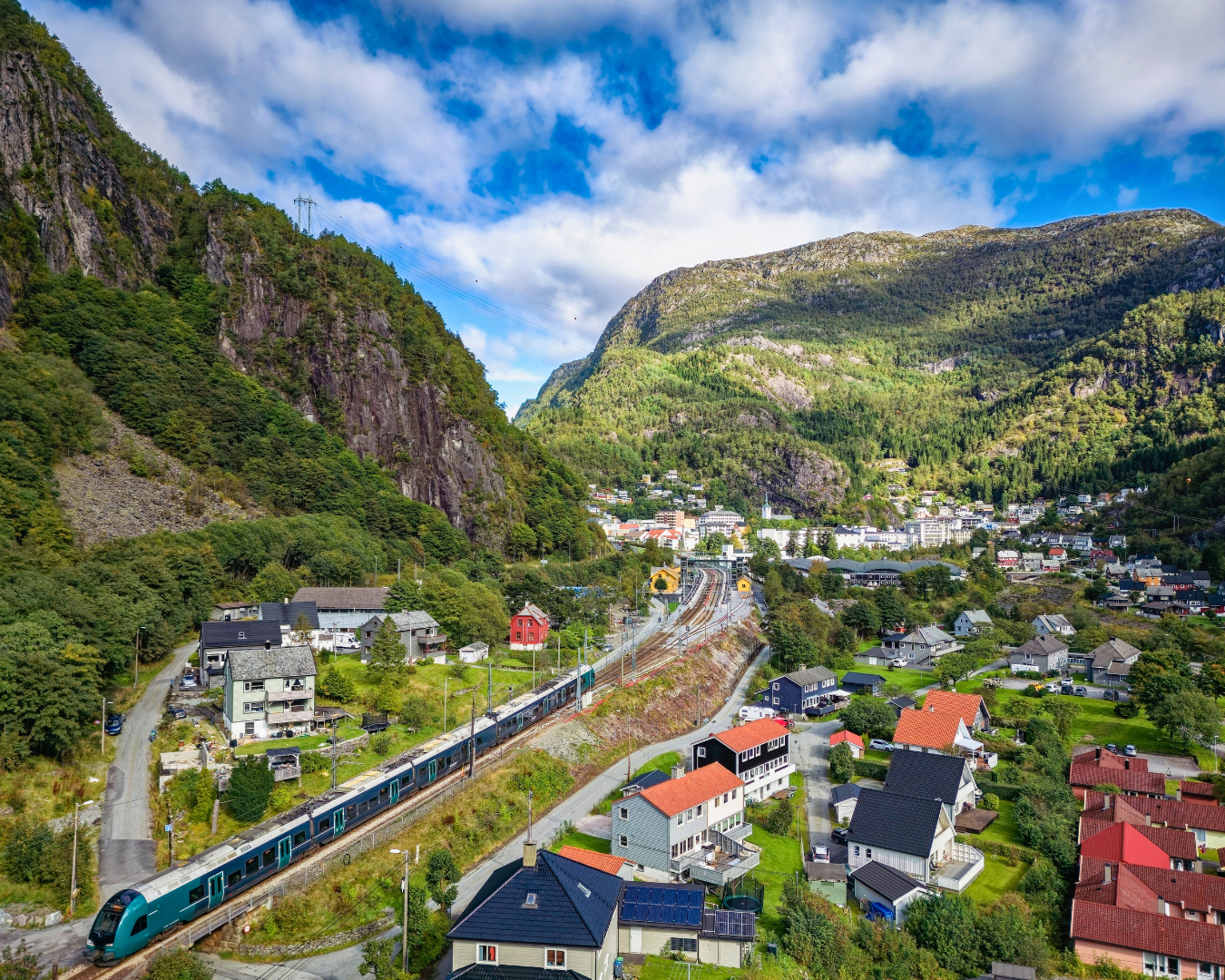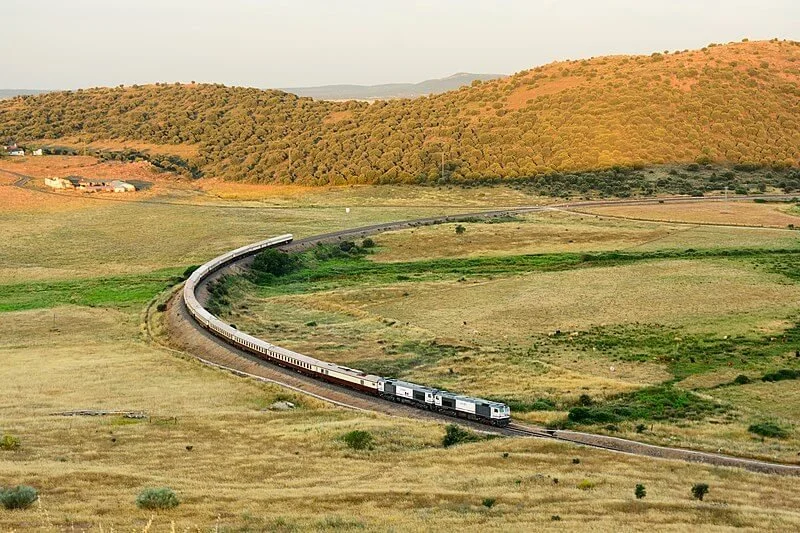Best Scenic Train Routes in Europe: Alps, Coastlines & Villages
Taking the train in Europe isn’t just about getting from A to B - it’s about how you get there. The steady clatter of the tracks, the changing scenery outside your window, and the relaxed pace all work together to make travel feel less like a chore and more like part of the experience. Unlike flying, where you’re stuck in airports and security lines, the train lets you unwind, read a book, chat with fellow travelers, or simply watch the countryside roll by.
If you’re someone who hates the stress of airports or just wants a more laid-back way to explore, trains are a great option. You can hop on a morning train and arrive in a new town in time for lunch without the hassle of early check-ins or baggage claims. Plus, many European trains are fast, comfortable, and often more punctual than planes.
For solo travelers, trains offer a chance to meet people or enjoy peaceful alone time with a great view. Couples can enjoy a romantic journey through vineyards, mountains, or along the coast. And for anyone just needing a break from the fast pace of life, trains provide the perfect way to hit pause and soak in some calm.
Beyond the practical benefits, these train journeys pass through some seriously stunning landscapes. Imagine rolling hills dotted with vineyards in Burgundy, the jagged peaks of the Alps, or seaside cliffs along the Mediterranean…
This summer, consider swapping planes for trains and enjoy travel that’s part of the adventure. The routes we’ve picked aren’t just about getting somewhere - they’re about feeling like you’re truly there, every step of the way.
1. Glacier Express, Switzerland: The Swiss Alps
If you’ve ever wanted to travel through what feels like a Swiss postcard come to life, the Glacier Express is where it’s at. This train journey connects Zermatt and St. Moritz, cutting right through the heart of the Swiss Alps. It’s not just a ride—it’s a full experience. Expect to cross 291 bridges and pass through 91 tunnels, all while soaking up stunning views of snow-capped mountains, deep valleys, alpine meadows, and lakes so still they almost look unreal. The slow pace means you really get to take it all in, like watching the Alps unfold outside your window scene by scene.
Don’t rush this trip. Start in Zermatt and spend a couple of days there instead of just using it as a quick stopover. While most visitors head straight for the Matterhorn Glacier Paradise or the ski slopes, take a different approach. Check out the nearby Gorner Gorge for a quiet hike or find a local café where you can sip coffee and enjoy the mountain atmosphere without the crowds. This slower pace lets you experience the real side of Zermatt, beyond the tourist hotspots.
When you arrive in St. Moritz, be prepared for a more bustling scene, especially in the summer months. If you’re looking for something a bit more low-key, hop on the short train ride to Pontresina. It’s just around the corner but much quieter, with plenty of beautiful hiking trails and fresh mountain air. It’s an ideal spot to unwind after the Glacier Express and enjoy the alpine vibe without the crowds.
Overall, the Glacier Express isn’t just about getting from point A to point B. It’s about enjoying the journey through some of the most jaw-dropping landscapes Europe has to offer - at a pace that lets you actually appreciate it.
When to Go:
Summer (late June and July) is the sweet spot. The weather is just right - warm enough to enjoy the views without the chill of winter, and the wildflowers are in full bloom, making the landscapes even more vibrant. And the best part? It’s still before the true peak of the tourist season, so you get the beauty of the Alps with a little more space to breathe.
2. Cinque Terre Express, Italy: Coastal Beauty at Its Own Pace
If you want to take in Italy’s gorgeous coastline without stressing about driving or long hikes, the Cinque Terre Express is a really good option. This little train hops between the five villages—Monterosso, Vernazza, Corniglia, Manarola, and Riomaggiore - giving you stunning views the whole way. You’ll ride through tunnels cut into cliffs and get constant glimpses of the turquoise sea and those famous colorful houses stacked on the hills.
There’s no need to rush and try to see all five villages in one go. Take your time. Start in Vernazza - it’s one of the prettiest spots, with narrow cobbled streets that lead right down to the harbor. Grab a gelato, find a bench by the water, and just chill for a bit. If you want to hit the beach, Monterosso is the place to be. It’s got the best sandy shore in the area, perfect for a lazy afternoon, especially as the sun starts to set.
If you feel like moving a bit, check out the hiking trails between the villages. The views are totally different up close: think cliffs, wildflowers, and endless sea. It’s a great way to slow down and see a side of Cinque Terre the train can’t show you.
Early June is a sweet spot to visit. The weather’s nice but not roasting, and the crowds haven’t swarmed in yet. The villages are buzzing but still feel chill, with flowers blooming everywhere adding a fresh pop of color.
The train rides themselves are short but packed with views. You’ll zip through tunnels and cross bridges, spotting the sea through every window. But honestly, the best part is just wandering around the villages - each one has its own vibe, whether you’re grabbing a quick bite or wandering quiet streets. It’s a way to enjoy the coast without feeling rushed or overwhelmed.
Where to Spend Time Before and After:
If you’re looking for somewhere a little quieter to enjoy before or after hopping on the train, I recommend Levanto. It’s a peaceful spot with a nice beach and a relaxed vibe, plus it’s just a short train ride away from Cinque Terre. Spend a couple of nights here to enjoy some slower-paced coastal life.
After you’ve soaked in the Cinque Terre magic, make your way to Portovenere - it’s less touristy but equally stunning, with its colorful houses and calm waters. It’s the kind of place that lets you unwind and take in the simpler things.
If you're craving a train journey that slows down time and lets you truly soak in the surroundings, Switzerland’s new Grand Train Routes are calling your name.
We’ve written a detailed guide that walks you through these stunning routes (Vineyards and Valleys, Alpine Rivieras, East-West, and Lakes and Peaks) so you can start planning your perfect Swiss escape. These routes are made for travelers who want to connect with the land, explore beyond the usual tourist spots, and experience Switzerland in a way that feels like living in it, not just passing through.
Ready to slow down and enjoy the ride? [Check out the full guide here] for all the details on Switzerland’s newest scenic routes!
3. The RhB Bernina Express: Luxury Meets the Alps (without the Crowds)
If you’re after a luxurious yet laid-back train trip, the Bernina Express is hard to beat. It starts in Chur, Switzerland, and winds through the Swiss Alps all the way down to Tirano, Italy. Unlike busier routes like Venice, this journey feels more relaxed and personal - think stunning mountain views, cozy little alpine villages, and beautiful glacial lakes, without the crowds pushing past you. It’s luxury travel, but the kind that’s subtle and peaceful.
Before hopping on the train, it’s worth spending some time in Pontresina. This small town in the Engadine Valley is a calm, traditional spot—nowhere near as busy as nearby St. Moritz. You can stretch your legs with easy hikes through pine forests or enjoy a meal at one of the family-run restaurants serving up local dishes. After the train ride, don’t just rush through Tirano. This quiet Italian town is full of charm, with a few tucked-away spots and excellent wine from the Valtellina region. It’s a great place to unwind and soak in the atmosphere.
June is a particularly good time to do the Bernina Express. The weather is comfortable: cool enough for fresh alpine air but warm enough to appreciate the spring greenery. You’ll see meadows in full bloom, snow still lingering on the highest peaks, and crystal-clear lakes. Plus, it’s before the main tourist rush, so you get to enjoy all the beauty without the crowds.
The ride itself feels like moving through a postcard. Big panoramic windows let you take in the dramatic contrasts between Switzerland’s snowy mountains and Italy’s sunlit vineyards. The train is comfy and spacious, making it easy to relax and soak in the views. It’s a chance to experience the Alps and Italian countryside in style but without the hectic tourist traffic you might expect elsewhere.
Sils Maria is another beautiful town that’s worth exploring before hopping on the Bernina Express. Tucked away in the Swiss Alps, it offers a sense of solitude and timeless beauty. You can stay in small, locally-run hotels and enjoy the peaceful surroundings. After your train journey, spend some time in Tirano, which often gets overlooked by tourists but is absolutely stunning. You can visit Castel Grumello, a little-known medieval castle with incredible views of the surrounding vineyards and mountains.
4. The Oslo to Bergen Railway: Northern Beauty at Its Own Pace
If you’re looking to soak up Norway’s incredible landscapes, the train from Oslo to Bergen is a solid pick. This route takes you from the city vibes of Oslo through dense forests, past crystal-clear lakes, and over mountain passes with jaw-dropping views. Along the way, you’ll see everything from fjords to snow-capped peaks (season depending), and tiny villages that feel like stepping back in time. The scenery keeps changing enough to keep you glued to the window, making it an easy, relaxing trip.
Before your train leaves, it’s worth spending some time in Oslo. Take a stroll along the calm harbor, or check out Grünerløkka, a laid-back neighborhood full of quirky cafés and street art. Once you get to Bergen, don’t miss the colorful wooden buildings of Bryggen and definitely take the funicular up to Mount Fløyen for panoramic city and fjord views.
If you want a quieter spot after the train, consider heading to Ulvik. It’s a small town just outside Bergen, right on the Hardangerfjord, surrounded by orchards and cozy cafés. It’s perfect if you want to slow down and enjoy some peaceful Norwegian countryside.
The best time to take this train is late spring or early summer (think May to June). The days are long, the forests lush and green, and you might catch the fjords thawing out from winter. Plus, you’ll miss the summer rush, so it feels more peaceful and intimate.
The train itself is comfortable and the big windows make it easy to lose yourself in the views. This trip isn’t just about getting from A to B - it’s about enjoying every moment along the way. It’s the kind of journey that invites you to relax, soak up the quiet, and watch some of Europe’s most stunning scenery roll by at a gentle pace.
Before you board the train, make sure to spend a day or two in Flåm, a small village nestled at the edge of the Aurlandsfjord. It’s a true Norwegian gem, often overlooked by tourists who are focused on larger cities. You can take a boat ride on the fjord or hike up to the Stegastein viewpoint for one of the most iconic views in the region. The train ride from Oslo to Bergen, while scenic, is just the beginning—Flåm offers a more intimate experience of Norway’s natural beauty.
5. The Al Andalus Train, Spain: Luxury with a Taste of Andalusian Charm
If you want a travel experience that feels like stepping back in time, the Al Andalus train is something special. This luxurious vintage train cruises through Andalusia, giving you a front-row seat to southern Spain’s stunning landscapes and historic towns. Starting in Seville, you’ll travel through places like Córdoba, Granada, and Ronda, each offering its own slice of Andalusian culture and history. The train itself is elegant, with beautifully restored carriages that carry a real old-world vibe - think polished wood, intricate details, and a dining car where you can enjoy classic Andalusian dishes as the scenery rolls by.
Before you board, it’s worth spending some extra time in Seville. While the city’s main sights are well-known, exploring quieter neighborhoods like Triana will give you a more relaxed, local feel. Nearby Carmona is another great stop if you want to escape the crowds; this small town has peaceful streets, traditional tapas bars, and lovely views, making it an ideal slow travel spot.
The best time to take this route is from October to April, when the weather is mild and comfortable for wandering around the towns without the summer heat or tourist rush. Fall is especially beautiful, with vineyards ready for harvest and the landscape dressed in autumn colors.
What makes the Al Andalus truly stand out is the pace. You’re not rushing from place to place but getting the chance to enjoy the towns and their surroundings fully. You’ll have plenty of time to explore local sites, wander streets at your own speed, and soak in the unique atmosphere of Andalusia. Plus, after a day of sightseeing, you can return to the train for a relaxed dinner, a comfortable cabin, and starry nights as you roll through the Spanish countryside.
While the Al Andalus train is all about luxury, it’s also about getting to know the local culture. Spend an extra day in Ronda, a town perched dramatically on a gorge. It’s a quieter alternative to the bigger cities of Seville and Granada, and you’ll get to experience its rich history, winding cobblestone streets, and stunning views. Don’t miss the historic Puente Nuevo bridge, which offers some of the best views of the town.
Why Train Travel Might Be Exactly What You Need Next
Here’s the thing… train journeys in Europe aren’t just about moving from A to B. They give you a chance to slow down, breathe, and actually enjoy the ride. Instead of rushing to squeeze every minute out of a destination, you get to soak in the changing scenery, spot the little things that make each place unique, and experience travel in a way that feels natural and relaxed.
Think about it: planes get you there faster, sure, but trains let you enjoy the journey itself. There’s something about watching the world pass by your window that just can’t be beaten.
Plus, traveling by train usually means less hassle: no crazy security lines or airport waits. It’s easier on your nerves and often kinder on your wallet, especially if you plan ahead. And because trains connect so many parts of Europe, you can mix city stops with countryside views without breaking a sweat.
If you’re ready to try something a little different and want your travel to feel more like an experience than a race, hop on a scenic train route. Give yourself the time to enjoy the ride, and you’ll find the places you visit feel richer, calmer, and more rewarding.
FAQ: Train travel in Europe – what to know before you go
What are the most scenic train journeys in Europe?
If you're planning a trip, routes like the Glacier Express (Switzerland), Bernina Express (Switzerland to Italy), and Oslo to Bergen Railway (Norway) are among the most scenic train rides in Europe. These journeys are perfect for summer travel, offering lush landscapes, clear skies, and fewer crowds in early June.
Are European train journeys safe and comfortable for solo travelers?
Yes. Most scenic train routes in Europe are very solo-friendly. They're safe, well-connected, and give you the freedom to travel at your own pace. Whether you're riding through the Alps or exploring the Italian coast, these journeys offer a peaceful and rewarding experience for solo travelers.
Do I need to book train tickets in advance for popular European routes?
For popular scenic routes like the Glacier Express, Bernina Express, and Al Andalus luxury train, it's highly recommended to book tickets in advance - especially if you're traveling in summer. Regional or local trains like the Cinque Terre Express often allow more flexibility, but seats can still fill up quickly during peak travel times.
When is the best time to take a scenic train trip in Europe?
The best time to travel by train in Europe is late spring through early summer - particularly May and June. The weather is warm but not too hot, the scenery is at its best, and the major tourist crowds haven’t arrived yet. For fall colors and a quieter pace, September is also an excellent choice.
Which train journeys are best for avoiding crowded tourist cities?
If you're trying to avoid places like Venice or Paris in peak season, look for routes that focus on smaller towns and scenic landscapes. The GoldenPass Line in Switzerland, Oslo to Bergen in Norway, and the Bernina Express (especially if you stop in Pontresina or Tirano) are perfect for peaceful travel and charming, lesser-known stops.
Can I bring luggage or store bags easily on scenic trains in Europe?
Most long-distance and scenic trains in Europe have dedicated luggage storage areas either above the seats or at the end of the carriage. There’s usually no strict weight or size limit, but pack light if you’re planning to hop on and off or explore villages between stops.
Are scenic trains in Europe expensive? What’s the budget-friendly option?
Some routes like the Glacier Express or luxury trains like Al Andalus can be pricey, but others—like the Oslo to Bergen line or Cinque Terre Express—are very affordable. Booking early, choosing 2nd class seats, and traveling in shoulder season (May or September) can help you save money while still enjoying an amazing experience.
Want More Insider Travel Tips?
Join our newsletter for more on slow travel, hidden gems, and how to make every trip feel like your very own movie moment.

